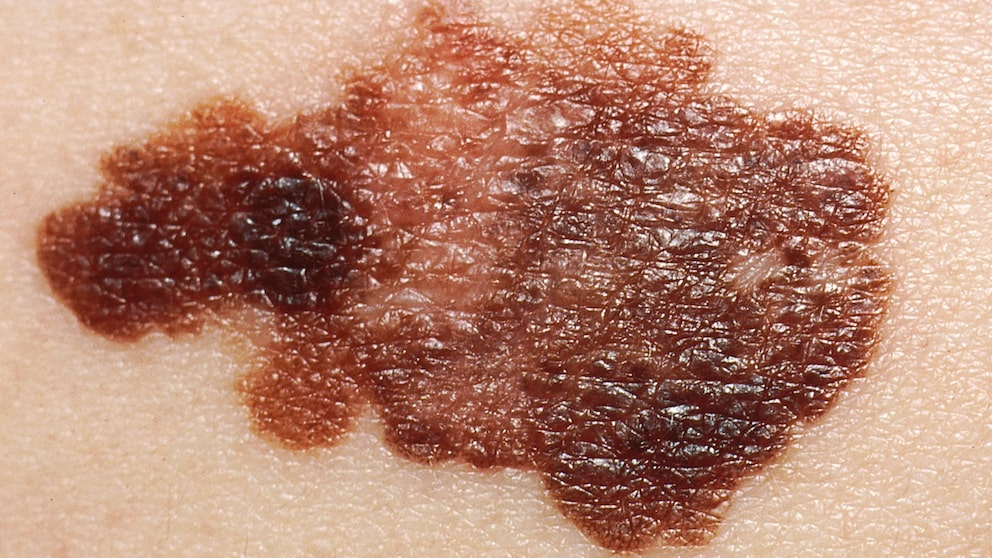January 2, 2025, 4:41 pm | Read time: 5 minutes
Fish is generally considered to be a very healthy food. This is mainly due to the abundance of omega-3 fatty acids it contains – especially in oily fish. However, one study came to the conclusion that eating too much fish can also make you ill.
In Germany alone, around 220,000 people are diagnosed with skin cancer every year.1 This makes it one of the most common types of cancer. The so-called black skin cancer (malignant melanoma) is usually responsible for a fatal outcome.2 According to a study, eating fish increases the risk of precisely this serious form of skin cancer.
Overview
Course of the Study
For the study published in 2022, the scientists at Brown University drew on data from 491,367 people. These were collected as part of the National Cancer Institute’s NIH-AARP Diet and Health Study. In addition to health data, they also included information on the lifestyle of the participants. At the beginning of the data collection, the subjects, who were, on average, 62 years old and healthy at the time, indicated how high their fish consumption had been in the previous year. They informed the researchers about their frequency of consuming raw and cooked fish, as well as the portion sizes.
Based on the information, which covered a period of 15 years, the researchers at Brown University analyzed the link between fish consumption and the occurrence of skin cancer. They also took into account socio-demographic factors and the body mass index of the participants. The researchers also looked at physical activity, smoking, family history of cancer, daily consumption of alcohol, caffeine, and calories, as well as the average UV radiation in the participants’ surroundings.
Link Between Fish Consumption and Skin Cancer
During the study period, 5034 test subjects developed skin cancer, more specifically malignant melanoma. There were also 3284 cases of melanoma in situ, the early stage of malignant melanoma. The scientists’ analysis showed that a high consumption of fish increases the risk of both forms of skin cancer.3
How Much Raw Fish and Tuna Is Too Much?
The risk of skin cancer was significantly increased for study participants who ate an average of 14.2 grams of tuna per day compared to people who ate just 0.3 grams per day. They had a 17 percent higher risk of early-stage melanoma. The risk of developing malignant melanoma was even 20 percent higher.
Those who ate an average of 17.8 grams of raw fish per day had a 25 percent higher risk of melanoma in situ compared to people who ate only 0.3 grams per day. Their risk of black skin cancer was 18 percent higher.
The scientists did not find a significant association between the consumption of cooked fish and skin cancer.
Limitations of the Study
According to a statement from Brown University, the study is subject to some limitations.4 For example, some risk factors for skin cancer were not taken into account. These included, for example, the number of moles, hair color, frequency of severe sunburn, and the extent to which the participants were exposed to the sun. The researchers were also unaware of the extent to which fish consumption may have changed over the course of the test subjects’ lives. As the data was also collected in the form of a survey, i.e., via self-reporting, the study could only make a statement about a link between diet with fish and skin cancer. However, it could not prove a causal relationship.
Nevertheless, Eunyoung Cho, co-author of the study and Associate Professor of Dermatology and Epidemiology at Brown University, considered the investigation to be important “because it is very comprehensive and prospective, i.e., fish consumption was investigated before the development of cancer.”
Mercury in Fish Could Increase Skin Cancer Risk
Cho, who has been involved in previous research on the effect of diet on the risk of skin cancer, assumes that it is not the fish itself but the mercury it contains that is hazardous to health.
“We suspect that our results may be due to contaminants in the fish such as polychlorinated biphenyls, dioxins, arsenic, and mercury,” Cho said. “Previous research has shown that higher fish consumption is associated with higher levels of these substances in the body and has found a link between them and a higher risk of skin cancer.” As the current cancer study did not measure the specific types and quantities of pollutants present in the test subjects’ bodies, further research is necessary to establish causality, according to Cho.

Cambridge study Butter, cheese, and fatty meat can increase the risk of death

Research How Diet Can Influence the Risk of Prostate Cancer

Malignant Melanomas Study Reveals Unexpected Factor for the Survival Rate of Skin Cancer
Other Foods Associated with Skin Cancer Risk in Research
Fish is not the only food that scientists have investigated in connection with the risk of skin cancer. A study from 2019 had already provided evidence that the consumption of cereals and cereal products as well as sweets (e.g. chocolate) could increase the risk of melanoma. The same study showed a protective effect from the consumption of legumes, olive oil, onions, and garlic. However, the research was unable to clarify the exact causality and explanation for the link.5

